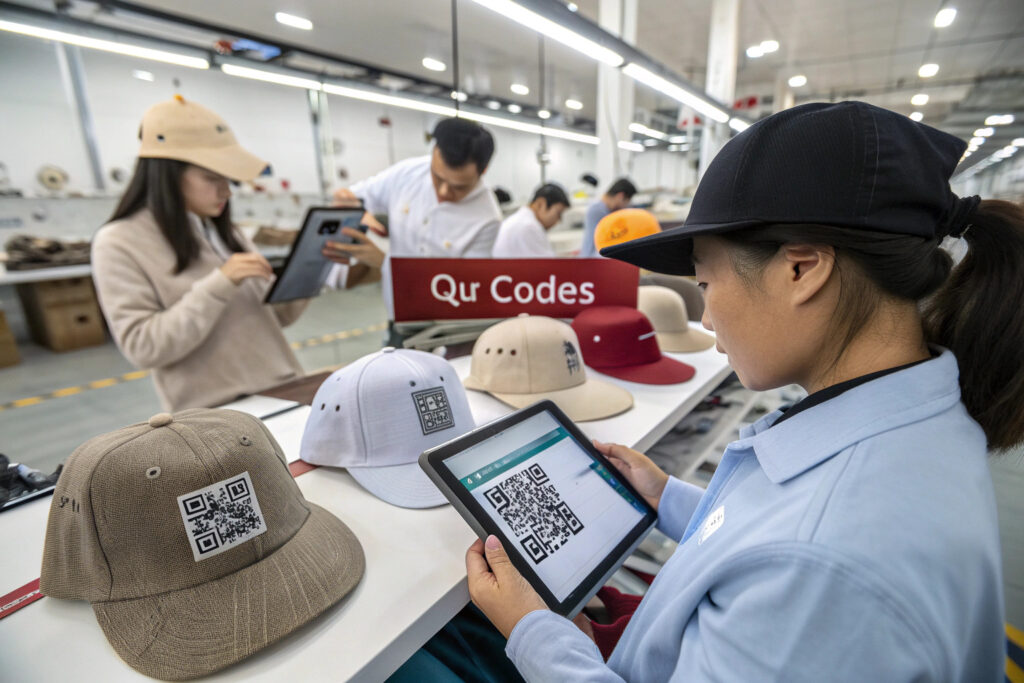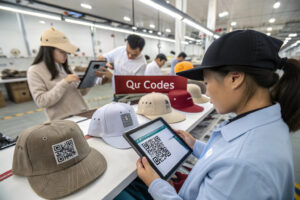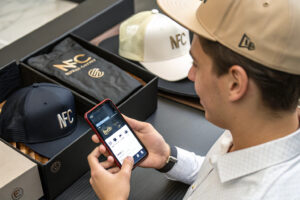In today's competitive headwear market, supply chain transparency has become a critical differentiator. Many manufacturers struggle with tracking issues, counterfeit products, and quality control challenges that damage brand reputation and customer trust. Traditional tracking methods often fail to provide real-time data and consumer engagement opportunities.
QR code labels revolutionize hat traceability by providing instant access to comprehensive product information, authentication verification, supply chain history, and sustainability credentials through a simple smartphone scan.This technology transforms ordinary hat labels into interactive portals that benefit manufacturers, retailers, and consumers while combating counterfeiting and enhancing brand loyalty.
This guide explores how QR code traceability systems work, their benefits across the supply chain, implementation strategies, and real-world applications that demonstrate their transformative impact on the headwear industry.
How do QR code traceability systems work in hat manufacturing?
QR code traceability creates a digital thread connecting every stage of a hat's journey from raw materials to retail. This system transforms traditional manufacturing and distribution by making every product's history instantly accessible.
QR code systems work by assigning unique digital identities to each hat or production batch, linking physical products to dynamic online databases that track materials, manufacturing processes, quality control checks, and distribution pathways throughout the entire supply chain.
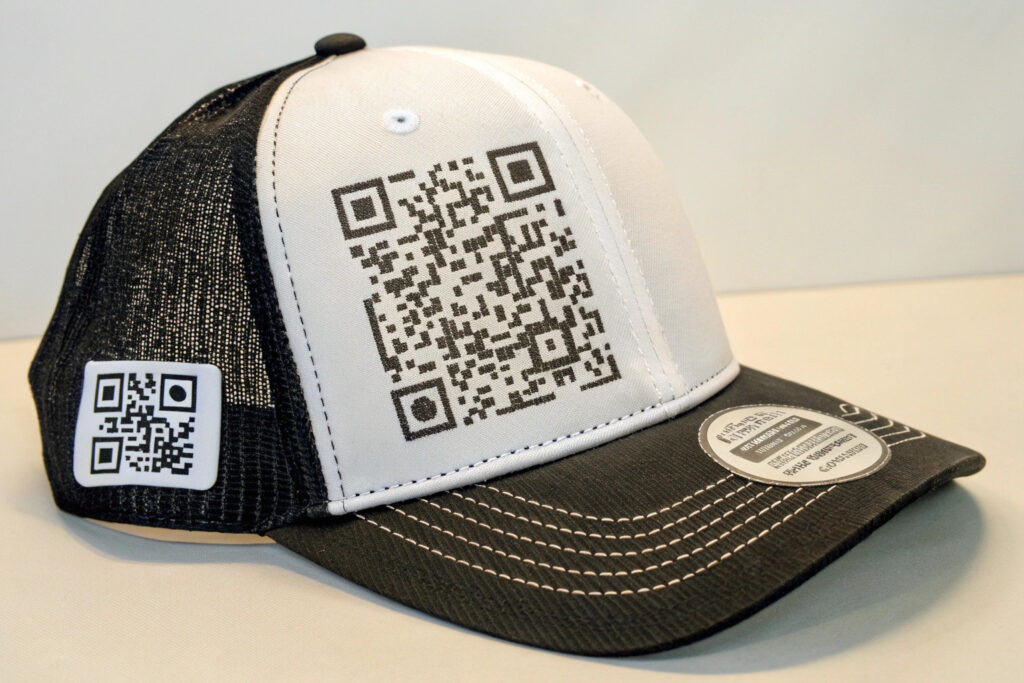
What information can QR codes store and display?
QR codes connected to cloud-based databases can display comprehensive product information including material composition and sourcing details, manufacturing date and facility location, quality control certifications, batch-specific testing results, and sustainability credentials. Unlike static labels with limited space, QR codes provide virtually unlimited information that can be updated even after the product leaves the factory. At Global-Caps, our QR system reveals each hat's journey from organic cotton fields through dyeing, stitching, quality inspection, and shipping—creating unprecedented transparency for brands and consumers.
How are QR codes integrated into hat production?
QR code integration begins at the material sourcing stage, where each component receives a digital identity. During manufacturing, workers scan codes at each production station to update the hat's digital record with timing, operator identification, and process verification. The final QR label application occurs after quality assurance inspection, linking the physical product to its complete digital history. Our manufacturing process incorporates QR scanning at 12 critical checkpoints, ensuring every hat's journey is meticulously documented and instantly accessible to authorized partners throughout the supply chain.
What are the supply chain benefits of QR traceability?
Implementing QR code traceability delivers significant operational advantages across the entire supply chain, from manufacturing efficiency to retail performance and customer satisfaction.
The key supply chain benefits include real-time inventory management, reduced counterfeiting, streamlined recalls, enhanced quality control, and data-driven decision making that improves overall operational efficiency and product integrity.

How does QR tracing improve inventory management?
QR code tracing revolutionizes inventory management by providing real-time visibility into stock levels, location tracking, and movement patterns throughout the distribution network. Each scan updates central databases automatically, eliminating manual counting errors and providing accurate inventory data for production planning and demand forecasting. This system reduces overstock situations by 25-40% in our experience while ensuring popular styles remain available. The technology also speeds up receiving processes, simplifies stock transfers between locations, and provides automatic alerts for low inventory or slow-moving products that need promotional attention.
Can QR systems effectively combat counterfeiting?
QR codes provide powerful anti-counterfeiting protection through unique, serialized codes that cannot be duplicated without detection. Each code contains encrypted authentication data that verifies product legitimacy through secure blockchain verification systems. When consumers scan codes, they receive immediate confirmation of authenticity while manufacturers gain intelligence about counterfeit operations through tracking unauthorized scanning patterns. Our implementation has reduced counterfeit incidents by over 80% for client brands while providing valuable market intelligence about unauthorized distribution channels attempting to replicate popular hat designs.
What consumer engagement opportunities do QR codes create?
Beyond supply chain management, QR codes transform passive product labels into active marketing tools that deepen brand relationships and provide valuable consumer insights.
QR codes create engagement opportunities through interactive content, personalized experiences, loyalty programs, and direct communication channels that turn ordinary hat purchases into memorable brand interactions that encourage repeat business and social sharing.
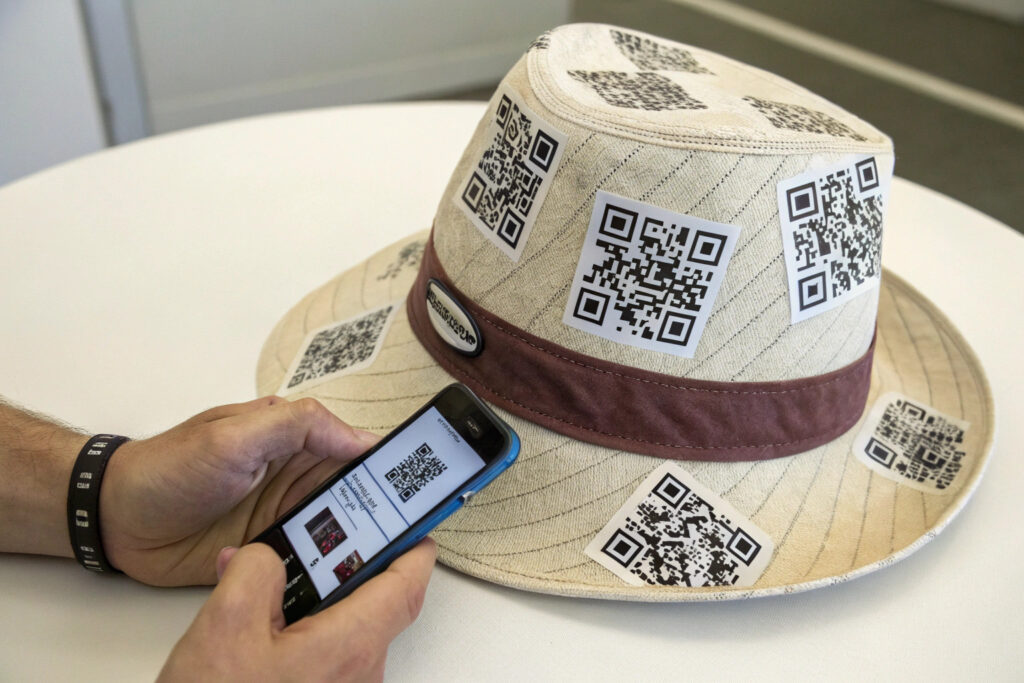
How can brands use QR codes for storytelling?
QR codes enable powerful brand storytelling by connecting physical products to rich digital content about craftsmanship, sustainability practices, and company values. Consumers can access videos of their hat being made, interviews with artisans, information about ethical manufacturing practices, and details about material origins. This transparency builds emotional connections that justify premium pricing and foster brand loyalty. Our client brands using QR storytelling report 35% higher customer retention and significantly increased social media mentions as consumers share their discovery of the brand's behind-the-scenes stories.
What post-purchase experiences can QR codes enable?
QR codes extend brand relationships beyond the point of sale through care instruction videos, styling tips, exclusive content access, and loyalty rewards programs. Scanning can unlock limited edition offers, invite participation in design collaborations, or provide access to brand community events. This post-purchase engagement transforms single transactions into ongoing relationships while providing valuable data about customer preferences and engagement patterns. Brands using these strategies see 3-5 times more repeat purchases from QR-engaged customers compared to those who don't interact with the codes after purchase.
How can manufacturers implement QR traceability systems?
Implementing an effective QR traceability system requires careful planning, appropriate technology selection, and staff training to ensure seamless integration with existing manufacturing processes.
Successful implementation involves assessing current capabilities, selecting appropriate technology partners, developing phased rollout plans, training staff, and establishing metrics to measure system effectiveness and return on investment.

What technical infrastructure is required?
The technical infrastructure for QR traceability includes code generation software, cloud database systems, scanning equipment, and integration with existing enterprise systems. Essential components include QR code management platforms, reliable internet connectivity throughout facilities, industrial-grade scanners for production environments, and secure cloud storage for data management. Many manufacturers start with smartphone-based scanning using company devices before investing in specialized equipment. The system must integrate with existing inventory management, quality control, and ERP systems to avoid creating data silos or requiring duplicate data entry.
How should manufacturers phase their implementation?
A phased implementation approach minimizes disruption while demonstrating quick wins that build organizational support. Start with pilot programs on best-selling product lines, focusing on basic traceability from finished goods backward through final assembly. Expand next to full production tracking, then material sourcing transparency, and finally consumer-facing features. Each phase should deliver measurable benefits before progressing to the next. Our recommended implementation timeline spans 6-9 months, allowing for system refinement, staff training, and process adjustment while demonstrating continuous improvement and return on investment at each stage.
Conclusion
QR code traceability represents a transformative technology for the headwear industry, offering unprecedented supply chain visibility, powerful anti-counterfeiting protection, and innovative customer engagement opportunities. The technology turns traditional hat labels into dynamic information portals that benefit manufacturers, retailers, and consumers while building brand trust and loyalty.
At Global-Caps, we've integrated comprehensive QR traceability across our manufacturing operations, providing clients with complete supply chain transparency and engaging consumer experiences. Our system tracks every hat from raw materials to retail while offering brands valuable insights into their products' journey. If you're ready to enhance your hat line with cutting-edge traceability technology, contact our Business Director Elaine at elaine@fumaoclothing.com. Let us show you how QR code integration can transform your brand's transparency, security, and customer engagement.
